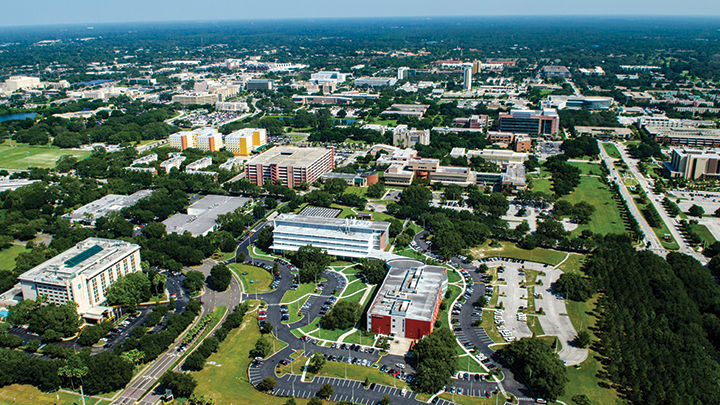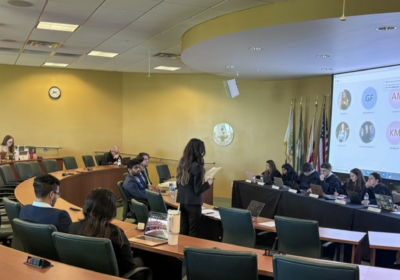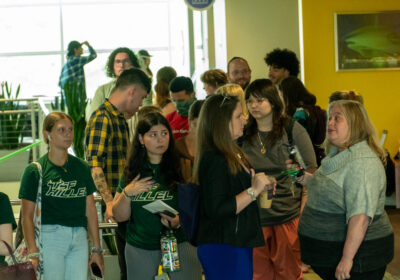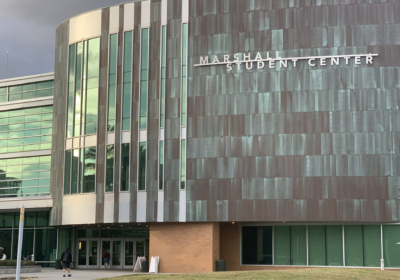BOG presents ‘blueprint’ for reopening university campuses in fall

The Florida Board of Governors (BOG) made the initial steps in developing what the fall semester will look like with a “blueprint” intended to guide each of the 12 public universities as they create their individual plans for resuming campus activity.
Chancellor Marshall Criser presented a plan called the “State University System of Florida Blueprint for Reopening Campuses” to the BOG on Thursday afternoon, setting up preliminary guidelines for universities as they develop their plans to “phase-in” back to the fall semester.
“We understand that we have to have a plan with agility so that we can respond to changing conditions and have the ability to be resilient,” said Criser. “What we know from COVID-19 to date is that things change. What we know from COVID-19 going forward is that things are likely to change.”
One of the guidelines presented by Criser is the need for required training and education for students, faculty and staff upon returning to campus.
“[The BOG] is going to have new health and safety procedures that will require training for all of our students and employees,” said Criser.
Specifics on what the training will require was not detailed in the presentation — a running theme throughout the meeting’s discussion when it came to most topics in the blueprint, was to leave some of the decisions up to each university.
“I think it’s important to understand that the blueprint is to provide system guidance with clear expectations for each university, but also then to develop an individualized university plan to reopen its campus,” said Governor Charlie Lydecker. “So this blueprint is the first stage.”
For example, the USF community can expect clarification on the use of personal protective equipment (PPE) on campus, including masks and gloves, by USF administration.
“The use of face coverings and hand sanitizers should be addressed in each university plan,” according to the PowerPoint presentation that displayed the BOG’s blueprint.
Each public university will present its individual plans for safely reopening campuses in the fall semester to the BOG on June 23.
The individualized plans should comply with guidelines set by the Centers for Disease Control and Prevention (CDC) at state and local levels, including athletic events.
Criser emphasized that the resumption of collegiate athletics is still in the hands of host organizations such as the Southeastern Conference (SEC), National Collegiate Athletic Association (NCAA) and American Athletics Conference (AAC). When they do resume, each university is to include its own guidelines for students, staff and spectators.
While athletic events are at the discretion of conferences and individual programs, the resumption of other athletic activities such as intramural sports was briefly referenced.
“We’re going to focus on academics in the front end, but we also anticipate the ability to expand students’ extracurricular activities, as we see that we’re actually seeing that shared responsibility,” said Criser.
How each university or the BOG would determine if “shared responsibility” was being executed adequately enough for those extracurricular activities to resume was not discussed further.
Even some of the precautionary measures that the universities are expected to make were not too detailed, other than mentioning that the measures would be at the discretion of each university’s phase-in plan — one of these mentioned precautionary measures included testing.
“We anticipate to have testing plans that will include testing policies and procedures, processes for individual screening and processes for how we follow up when an individual has tested positive or is suspected to have been exposed to the virus,” said Criser.
Criser, however, did specify that the BOG wants the university system to be collaborative with each other as well as community health care providers when it comes to testing.
“We’re also working as a system to understand the opportunities where a university that has particular resources may be also able to assist another university where the type of curriculum, the individuals on that campus, where the resources may not be as heavy as someone else has,” said Criser.
This comes as all 12 of Florida’s public universities prepare for the return of a total of 420,000 students and almost 74,000 faculty and staff, according to Criser.
Of those faculty and staff, a few made it known at the BOG meeting that they want to be included in the process as their universities begin preparing their plans for the fall.
“The voices of faculty members should add to the dialogue in both informal and, if needed, negotiations on particular issues,” said Marshall Ogletree, UCF faculty and executive director of the United Faculty of Florida (UFF).
In his statements, Ogletree mentioned involving the leaders of the UFF as the way to have the faculty of each campus involved in the development of the phase-in plans.
Carloynn Gischel, a Florida Gulf Coast University faculty member, corroborated Ogletree’s statements about faculty involvement and the UFF.
“Just as when building a house, no matter how fast you have to build it, you don’t build it first and then call in the electrician and the plumber,” said Gischel. “So I understand we need to proceed with dispatch in developing these plans, but to involve the union only after the plan is developed with such limited resources, so many challenges.”
Members of the BOG seem to have a similar mindset of communal effort for the anticipated fall return, but with an emphasis on making sure each university’s instructions are implemented and enforced.
“What we need to understand and recognize is that we have a shared responsibility. Students, faculty, staff and administrators on campus have to work together, have to support the guidelines that we will have in place in order to make this successful,” said Criser.
“If we begin to lack that collaboration, that is where we will see the biggest challenges.”






